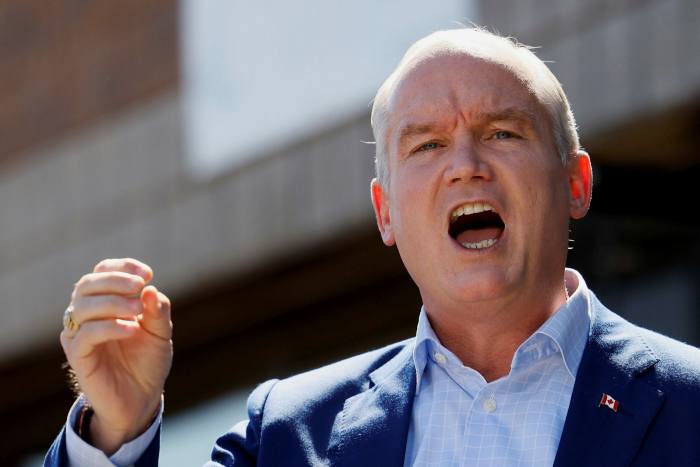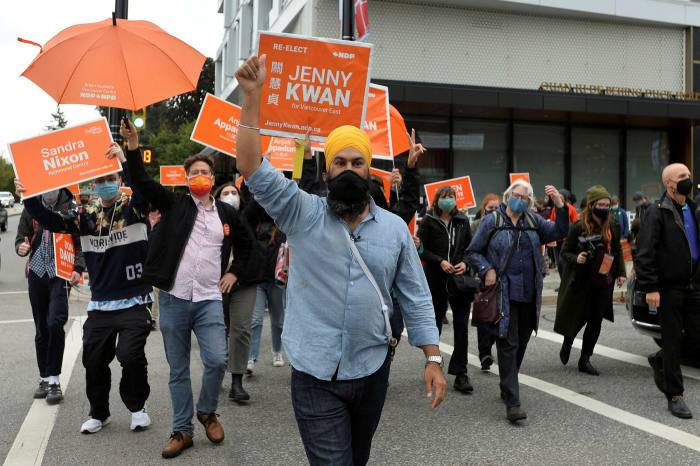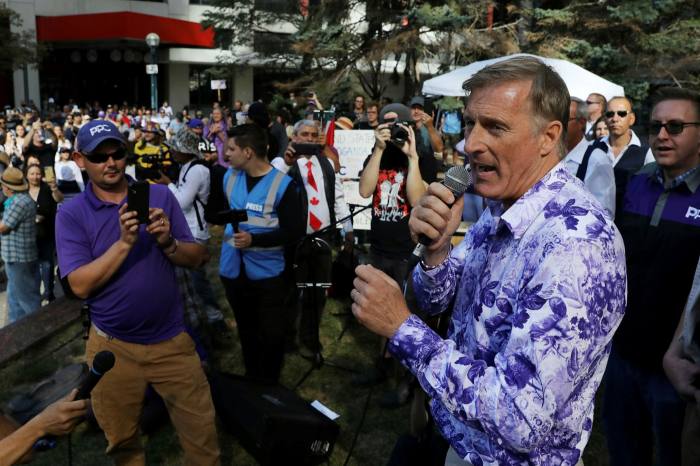Canadians go to the polls on Monday to elect a new parliament after an unexpectedly tight race set against the backdrop of a fourth coronavirus wave, in which Justin Trudeau’s Liberals have struggled against an energised Conservative opposition.
Polls show the Liberals under Trudeau are likely to emerge once again as the largest minority party after the snap election, ahead of Erin O’Toole’s Conservatives, the socialist New Democrats and the nationalist Bloc Québécois. Trudeau would then probably be asked to form a minority or coalition government.
But such a victory would be a setback for Trudeau, who had hoped to use his party’s management of the pandemic and successful vaccination drive, as well as O’Toole’s relative obscurity, to win a majority.
“Canada is today at a crossroads, at a moment where we have to make a really important choice,” Trudeau said in one of several campaign events on Sunday. The Liberal leader sought to equate his opponents with anti-vaccine protesters who have dominated the news in recent days, and said Canadians faced a choice of moving forward with his party or backwards if his opponents win.
O’Toole made an economic pitch to voters, warning of high inflation and excessive spending while painting Trudeau as a power-hungry politician who called “a $600m unnecessary election in the middle of a pandemic”.
As of Sunday, the Liberals were leading the Conservatives by 31.4 per cent to 30.7 per cent nationally, according to the Canadian Broadcasting Corporation’s poll tracker. This translates to about 154 projected seats for the Liberals and 118 for the Conservatives. To form a majority, a party needs 170 seats.
The Liberals currently hold 155 seats and the Conservatives 119, so the two largest parties appear set to maintain the status quo.
The projected results are a far cry from what analysts and pollsters expected when the snap election was announced last month, which showed the Liberals within striking distance of a majority.
The results of the election are unlikely to be announced on Monday night due to the high volume of voters who opted to submit postal ballots. Elections Canada, the body in charge of organising elections, said the results could come later in the week after the postal ballots were verified and counted.
The last week of campaigning has been dominated by the pandemic. In the western province of Alberta, Conservative premier Jason Kenney declared a public health emergency as overwhelmed hospitals began running out of staff and beds to treat acute coronavirus patients. Kenney apologised for a premature summer reopening plan that worsened the spread of the virus.
The crisis in Alberta offered a contrast between the Conservatives’ mismanagement of the pandemic and the Liberals’ successful federal vaccination drive, in which nearly 85 per cent of Canadians 12 years and older have received at least one vaccine shot, and their massive stimulus spending and support cheques that were passed early on in the crisis.
Liberal strategists have argued the party should have focused primarily on its pandemic record.
Anti-vaccine protesters continued to hound Trudeau’s campaign and have picketed hospitals in response to proposed vaccine passports and mandates in various provinces. The escalation of the protests has coincided with the rising fortunes of the People’s Party of Canada, a populist, libertarian, anti-immigrant movement led by a former Conservative MP that holds no seats in the legislature, but whose supporters argue the government is increasingly tyrannical.
Trudeau had said last month that he was seeking a mandate to finish the fight against Covid and oversee the recovery, while outlining priorities in affordable housing, climate change, childcare and reconciliation with indigenous communities.
But he has run up against a surprisingly effective campaign by O’Toole, who partly succeeded in blunting traditional Liberal attacks by running on a more centrist platform that includes billions in stimulus spending.
The snap election has also been portrayed by the opposition parties as a naked power grab, particularly since Trudeau has been able to pass substantive legislation while leading a minority government since October 2019, a charge that exacerbated the dwindling of his popularity after six years in office.




